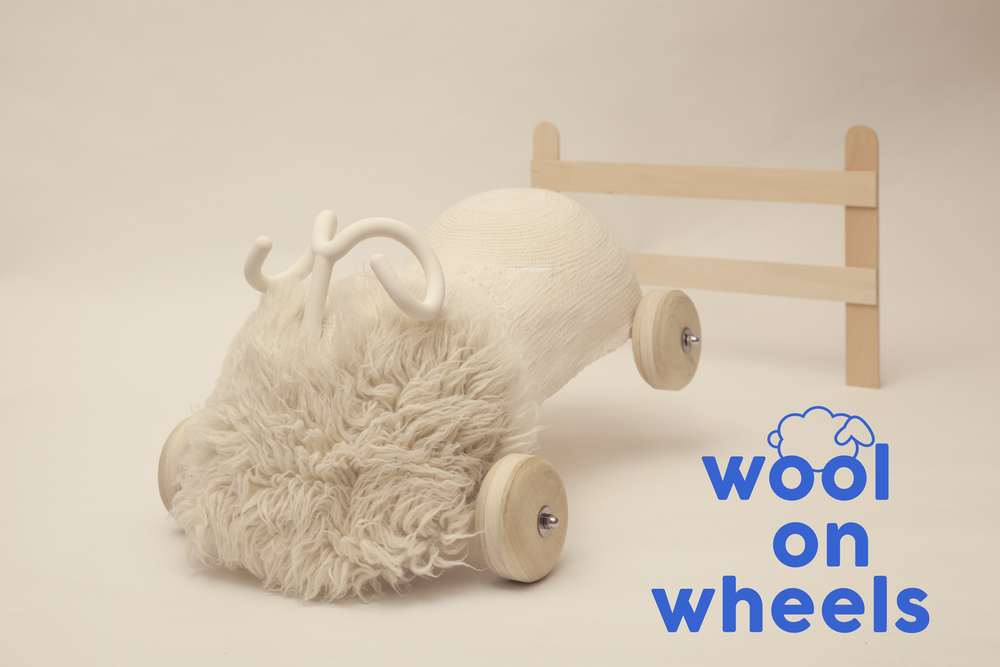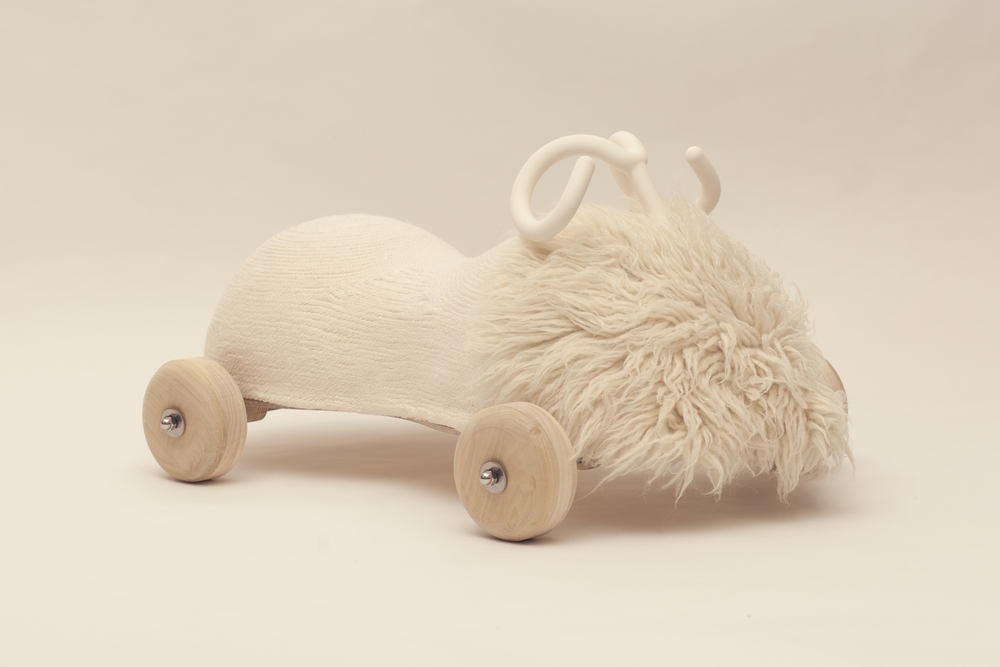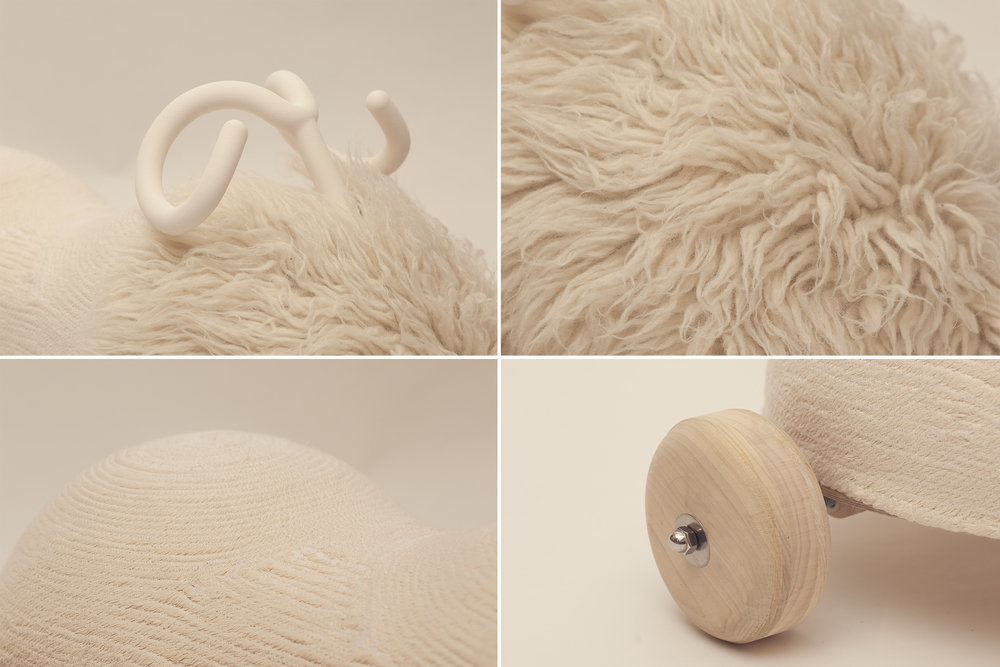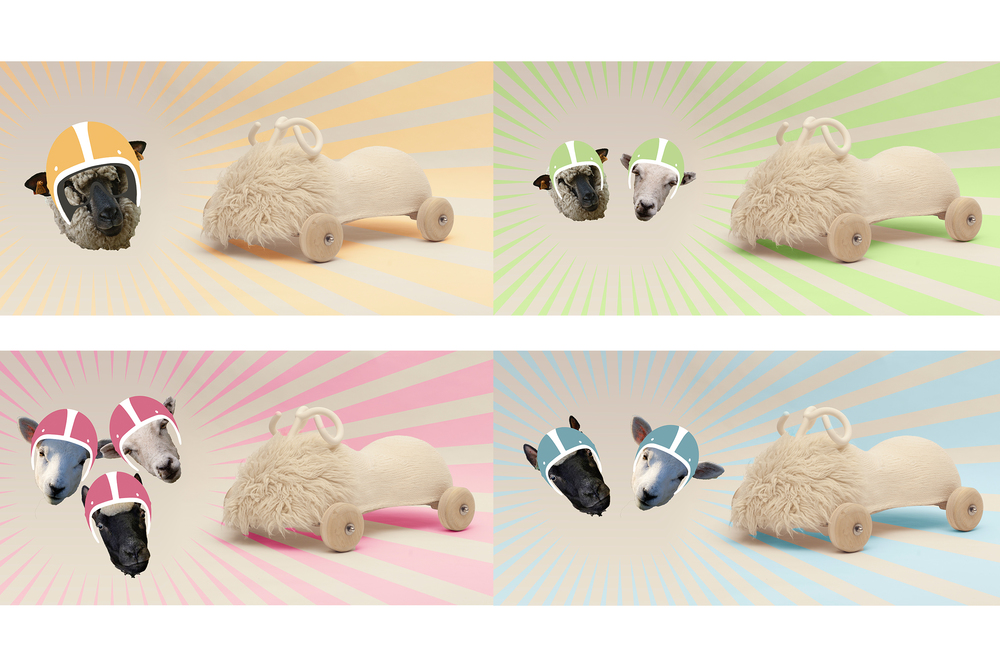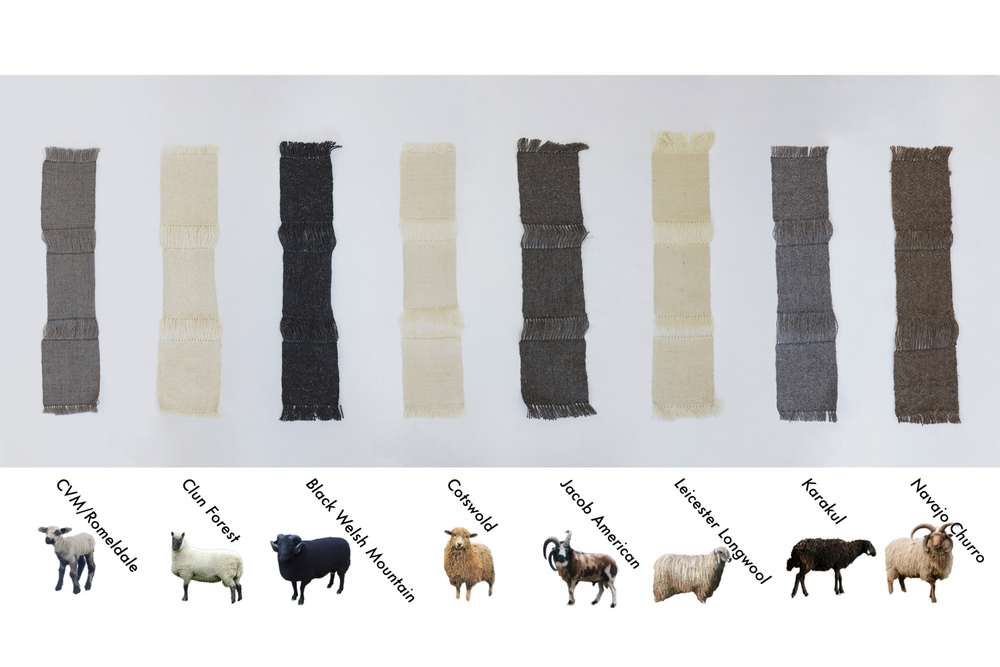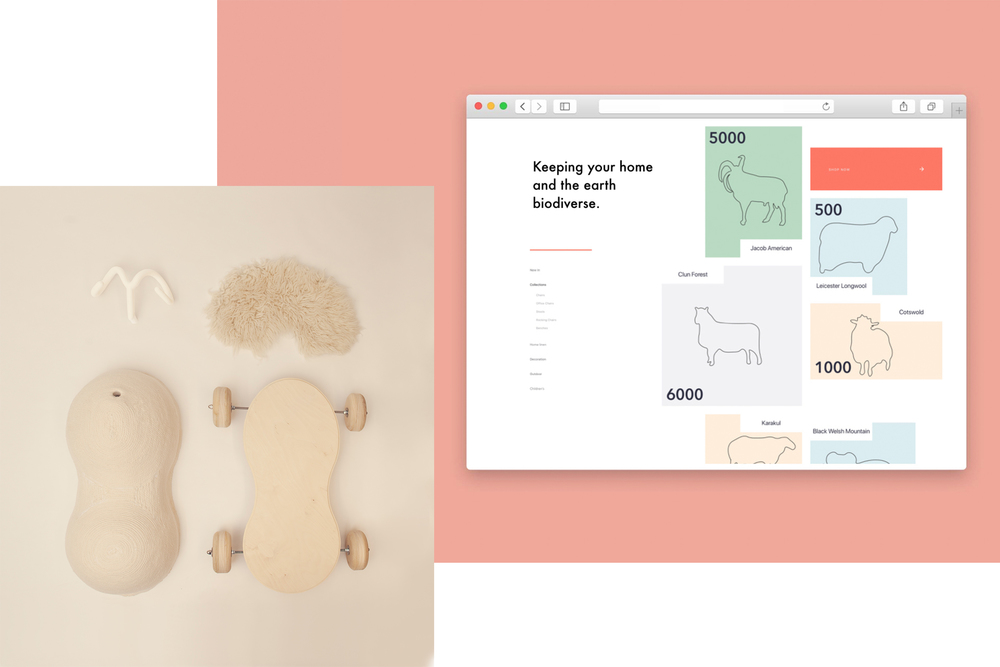Honorable Mention
Wool on Wheels
A car that stimulates biodiversity, created with a composite material of agri-waste and rare wool
Solution
Saving endangered sheep breeds by driving toy cars, made almost completely out of wool and other sheep farm-based materials. It contains wool, casein plastic, milk paint, bioresin, and lanolin. As wool from rare breeds is often not suitable for the fashion industry due to its coarseness, I questioned whether wool has to be considered a soft material. This research led to the creation of eco-friendly fiberglass-type material, by reinforcing bioresin – extracted from agri waste – with wool fibers.
Project Description
Designers have the power to shape biodiversity through their material choices and manufacturing practices. The wool industry directed the rise of the Merino sheep breed and led to the endangered status of other sheep breeds. The rich genetic legacy carried in rare breeds is, however, essential to the future of sustainable agriculture. This project seeks to stimulate biodiversity in design by creating applications with underused renewable resources. Proving the potential of rare sheep breeds, I combined different wool types and altered their conformations into an application normally not considered or linked to sheep: the automobile industry. Wool-on-Wheels is a toy car that is made of wool and sheep byproducts. An online platform makes use of consumer demand to increase the count of threatened sheep. Consumers can select products based on the status of the sheep, giving direct support and new incentives to farmers to raise more diverse flocks and save endangered sheep breeds.
Overview of the Solution
The design, manufacturing and use of an industrialised object holds the power to shape biodiversity. In this project I explored this influence, often being a negative one, and aim to twist it around and make industrial design beneficial for conservation purposes. Designing with renewable undervalued materials to stimulate biodiversity will maintain a large spectrum of materials that can be used for future generations. By raising awareness and ensuring material transparency I hope to leverage consumers to be stakeholders who help to stimulate the reproduction of endangered livestock. During my research I came in contact with many sheep farmers who raise endangered or threatened sheep. There are hundreds of different breeds of sheep with different morphologies. They vary in hair length, hair color or they have been adapted to the geography and climate of a specific location. I investigated the potential of different wool types to be turned into applications whose characteristics are derived from their varying properties. During this research I also came across several (by)products of the sheep industry, which led to the idea of creating wool composites which could function as lightweight alternatives to fibreglass furniture. Assembled in a child’s plaything, a toy car, these design manipulations are intended to give new incentives to farmers to raise more diverse flocks.
Introducing children to the fantastic variety of sheep characters and their peculiarities will foster a sensitivity to biodiversity at an early age that children will carry into adulthood. This is enhanced with details of sheep morphology and the tactile qualities of the different materials including soft and hard wool. The body of the car is made of a resin-wool composite of which the resin is extracted from agricultural waste to make a degradable eco-friendly fiberglass. The steering wheel is painted with sheep’s milk paint, the mechanical parts are lubricated with lanolin, and the upholstery is made of wool. The manufacturing involves techniques ranging from weaving and felting to CNC for mold-making and casting. Wool-on-Wheels makes room for the wool of various undervalued breeds by introducing products for a wider range of tastes and qualities. With a fleet of toy car models varying in character, color, texture and form, Wool-on-Wheels has the potential to spark a playful discussion and awareness in parents and their young drivers.
PROJECT TEAM
Juliette van Haren
INSTITUTION
Parsons School of Design, School of Constructed Environments, United States of America
Category
Product
FACULTY/COURSE ADVISOR
Dr. Gyungju Chyon andDr. PJ Carlino
STAKEHOLDERS
I worked with a range of farmers during my project:
- Victoria Jaffery, Heckscher farm, Stamford, Connecticut, USA
- Greenbank Mills & Philips Farm, Wilmington, Delaware, USA
- Ann & Tony Kaminski, Break Loose Farm, Manchester, Maryland, USA
- Godshill Park Farm, Godshill,
United Kingdom - CurlyGooseCottage, Bath,
Pennsylvania, USA - John & Leah Douglas, Klamath Falls,
Oregon, USA - Sky Island Brand Ranch, McNeal,
Arizona, USA - Timberwood Farm, Rhoadesville,
Virginia, USA
Many of these farmers are associated with The Livestock Conservancy (USA) or the Rare Breeds Survival Trust (UK).
